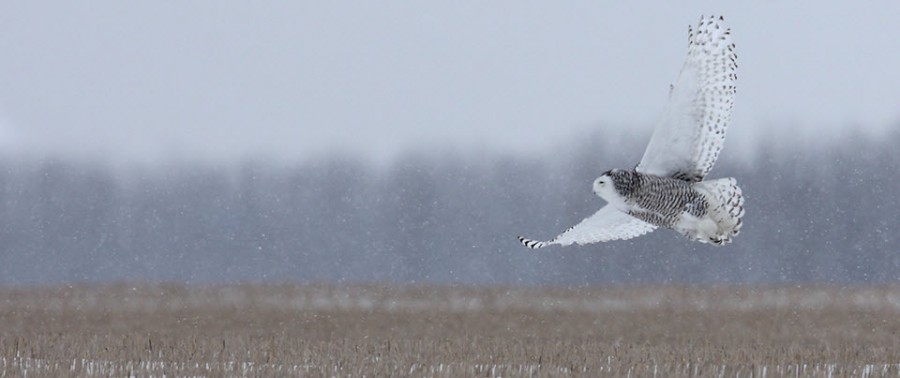- Movebank is a free online platform that allows users to share and archive animal movement data
- Movebank’s Env-DATA System allows users to compare animal tracking locations with increasingly available environmental data
- Researchers used this system to better understand how environmental conditions affect snowy owl and albatross movement and foraging behavior
Have you ever wondered how small-bodied Arctic mammals, like lemmings, survive in the harsh winter environment? Could climate change actually help lemming survival by creating a slightly warmer environment and reducing the snow pack that may slow their movements?
In fact, as Jean-François Therrien and colleagues learned by combining data on snow cover with the movements and behavior of snowy owls– which prey upon lemmings – the lemmings actually depend on snow and the frigid climate to survive.
Survival in the snow
For their study, Therrien and colleagues (2015) hypothesized that environmental conditions would affect snowy owl pre-breeding behavior and movements – in particular, the amount of time spent searching for food and the distance they moved to find a breeding site. Snowy owls (Bubo scandiacus) spend their summer breeding months in the Arctic, where their main source of prey is lemmings (the genera Lemmus & Dicrostonyx). As a result, owl reproduction depends primarily on lemming abundance.
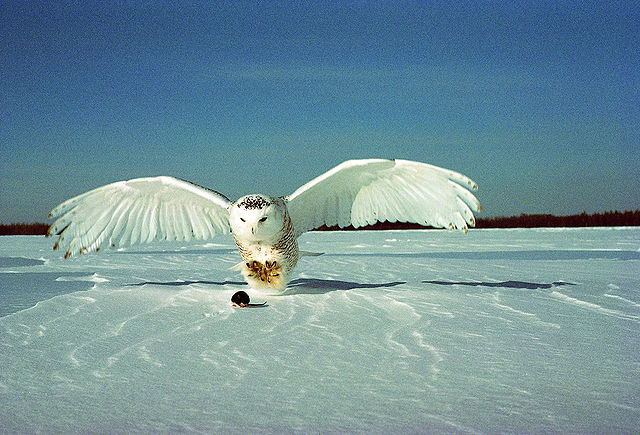
Lemmings in the Arctic form the basis of the food chain for their predators. Without lemmings, populations of arctic foxes and snowy owls would decrease dramatically (Kerr & Packer 1998). Therrien et al. (2015) predicted that snowy owls, due to their dependence on lemming prey, choose habitats where snow cover and depth are lower than average.
The researchers used environmental data available in Movebank – a free online platform that enables researchers to archive and share their animal tracking data with other researchers and public users around the globe. Researchers that register with Movebank can share their data and method and result summaries, selecting preferences for how much data to share with collaborators, other data managers, and the public.
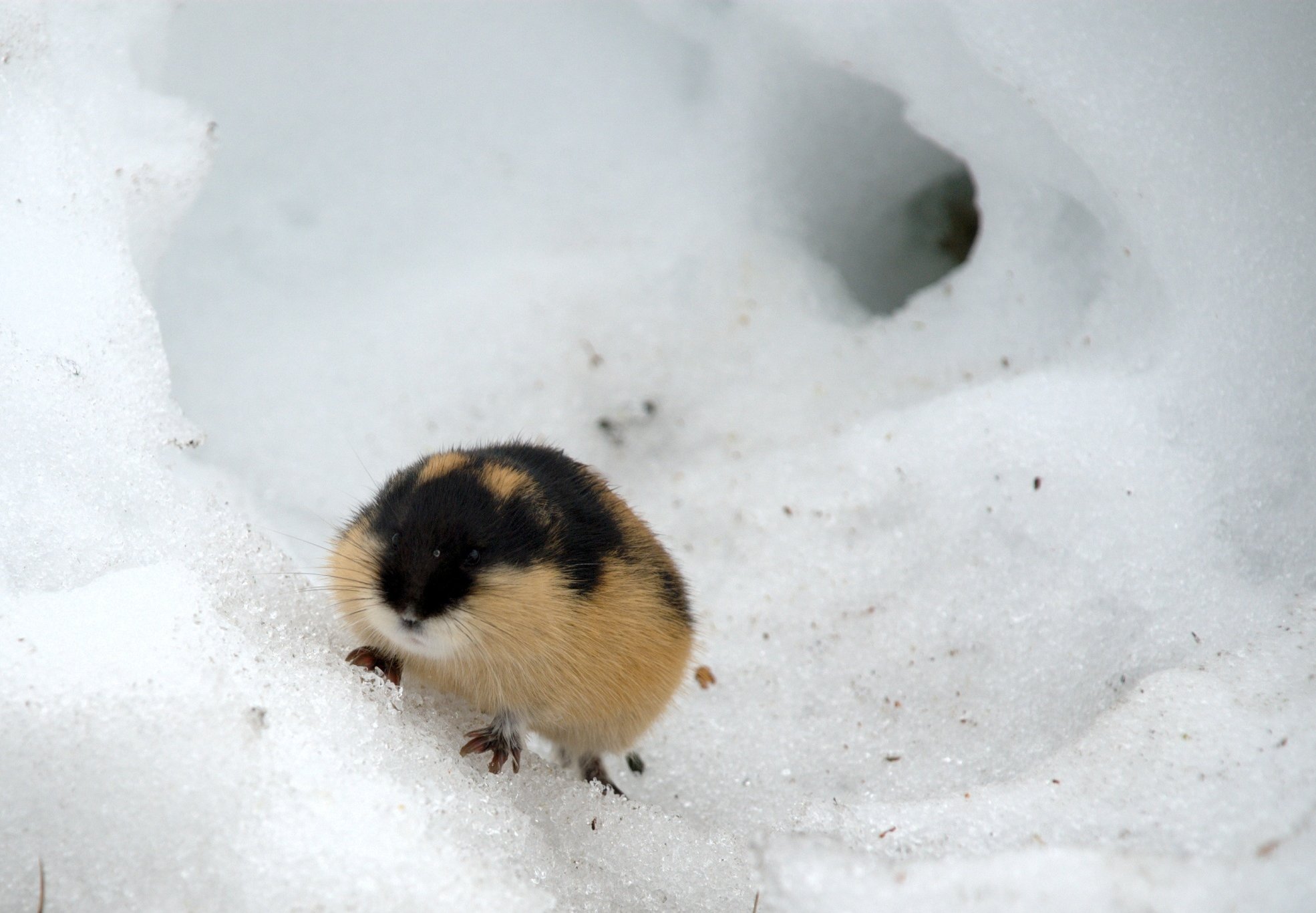
The research team tested their prediction using a combination of environmental and owl movement data through Movebank’s Env-DATA system. Env-DATA extracts environmental data from a range of global environmental datasets (e.g. NOAA and NASA) for the location and time period selected by a researcher and then presents them in a format chosen by the researcher (e.g. Excel) to compare with animal movement information. The available environmental data come from satellite remote sensing products and global models and include such variables as:
- Earth surface & vegetation
- Runoff, vegetation (i.e. productivity, vegetation cover), temperature (land surface, snow and ice, soil)
- Human population density
- Global Rural-Urban Mapping Project, Gridded Population of the World
- Ocean
- Sea ice, sea surface temperature, ocean currents and waves
- Topography
- Bathymetry, elevation, orography
- Weather
- Albedo and reflectance (albedo, snow albedo), clouds (i.e. cloud cover), evaporation
Each offers subcategories of environmental conditions that could be useful, depending on the research question and target animal species. Researchers can compare their own animal tracking data with the environmental conditions through this system, or they can use animal tracking data posted by other researchers. Therrien et al. (2015) utilized this new open system to compare snow cover and depth with their own snowy owl movement data.
The researchers found a strong spatial correlation between the owls’ pre-breeding movements and snow cover (%) and depth (m). Snowy owls spent more time in areas with lower snow density and less time in areas where snow density was higher. The owls also selected hunting locations where the success rate of locating and catching prey was high.
So, could a warmer Arctic benefit snowy owl and lemming fitness, by decreasing snow cover and the harshness of winter weather? Lemming and snowy owl ecology suggests this is unlikely.
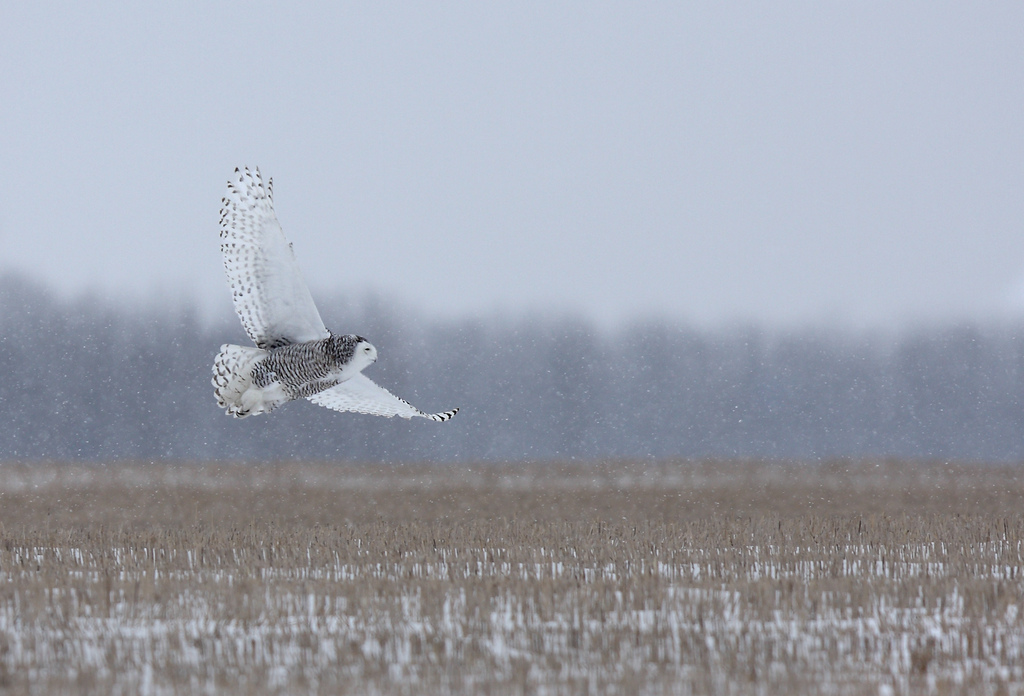
Although thinner snow cover would probably make it easier for snowy owls to catch lemmings, the lemming populations would dwindle, thereby negatively affecting the entire Arctic ecosystem. Lemmings need high-quality winter habitat to sustain normal population fluctuations. Frédéric Bilodeau and his colleagues (2012) found that lemming density was higher in areas with deeper snow cover and porous snow layers near the ground. Lemmings dig tunnels underneath the snow to avoid predation, increase the local ambient temperature in the burrows to reduce their physiological stress, and breed during the winter months.
Climate change can have major impacts on the Arctic environment through decreasing the amount of snow cover and depth, as well as increasing the likelihood of ‘rain-on-snow’. The rain-on-snow warms, then freezes, the top of snow, preventing herbivores, like lemmings, from accessing the vegetation underneath the now-crusty snow, which would, in turn, cause prey to perish from starvation.
The ability to combine data on environmental conditions and animal movements allowed Therrien et al. (2015) to track the relationship between snowy owl movements and snow cover and depth and to understand how climate change could affect their behavior and that of the keystone herbivores upon which they prey.
Gone with the wind, Albatross style
Somayeh Dodge and fellow researchers (Dodge et al. 2013) also utilized the Env-DATA system to combine waved (Galapagos) albatross movement data with wind speed (m/s) and wind direction (degrees from North), as well as ocean net primary productivity (NPP) data.
Using Galapagos albatross tracking data and the Env-DATA system, the researchers found that albatrosses foraged in areas where NPP (mg C/m2/day) was highest. By combining wind speed direction and albatross movements, Dodge et al. (2013) found that albatrosses traveled in ‘looping’ routes to make use of high winds. Moreover, the birds traveled long distances at certain times of the year to forage in particularly productive feeding grounds. Their paper describing the Env-DATA system in relation to their study can be found here.
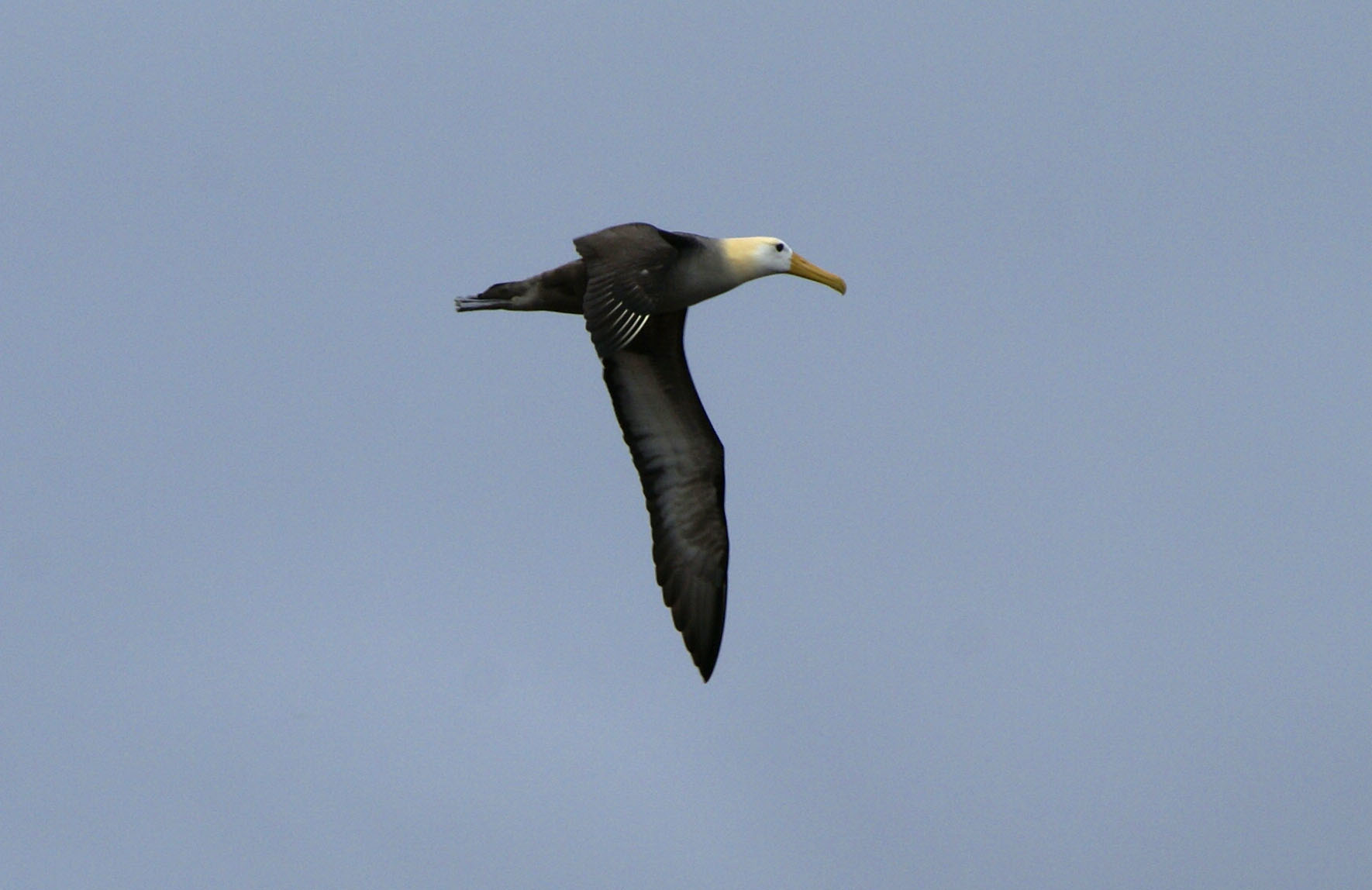
To combine animal tracking data with environmental conditions data, a Movebank user needs to first select a study or dataset, either using the Movebank animal tracking map or study selection page on the Movebank website. The user can then select the ‘Env-DATA’ option and ‘Send a Request’ to proceed to the selection of date ranges and environmental conditions. Ultimately, the environmental data are combined with the animal movement data in a downloadable Excel file or other similar format.
Currently, there are no analyses actually conducted by Movebank; however, they are working to develop a Track Simulation Service where the user will be able to “create simulated animal tracks and then annotate environmental data to simulated and real tracks to test hypotheses about relationships between animal movements and the environment”. Also under development is the Knowledge Discovery and Visualization Service where “users will be able to access imagery of environmental variables for chosen time periods and study areas”.
The Env-DATA system provided by the Movebank platform has numerous applications for environmental and conservation science. How will you put it to use?
Citations
Bilodeau, Frédéric, Gilles Gauthier, and Dominique Berteaux. The Effect of Snow Cover on Lemming Population Cycles in the Canadian High Arctic. Oecologia 172.4 (2012): 1007-016. Web.
Dodge, Somayeh, Gil Bohrer, Rolf Weinzierl, Sarah C. Davidson, Roland Kays, David Douglas, Sebastian Cruz, Jiawei Han, David Brandes, and Martin Wikelski. The Environmental-data Automated Track Annotation (Env-DATA) System: Linking Animal Tracks with Environmental Data. Movement Ecology (2013): n. pag. Movement Ecology Journal. Web. Here’s a PDF.
Kerr, Jeremy, and Laurence Packer. The Impact of Climate Change on Mammal Diversity in Canada. Environmental Monitoring and Assessment. (1998): 263-70. Springer Link. Web. Here’s a PDF.
Therrien, Jean-François, David Pinaud, Gilles Gauthier, Nicolas Lecomte, Keith L. Bildstein, and Joël Bety. Is Pre-breeding Prospecting Behaviour Affected by Snow Cover in the Irruptive Snowy Owl? A Test Using State-space Modelling and Environmental Data Annotated via Movebank. Movement Ecology Mov Ecol 3.1 (2015).
